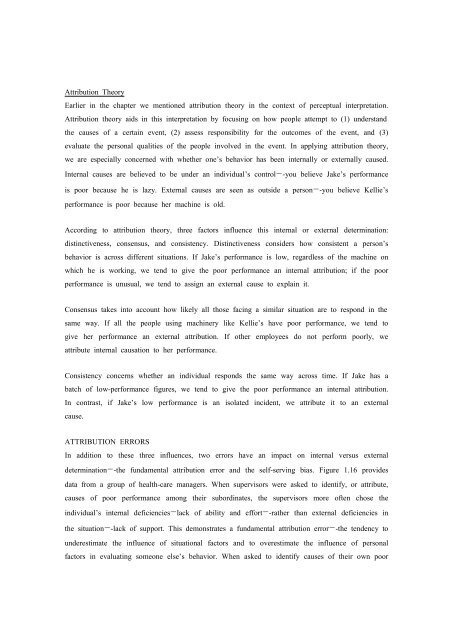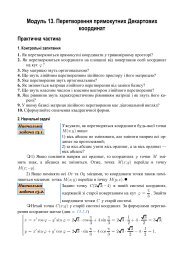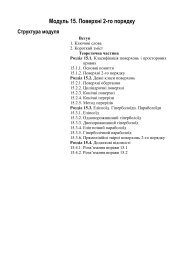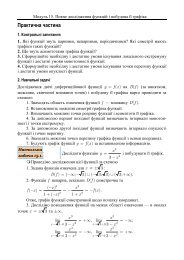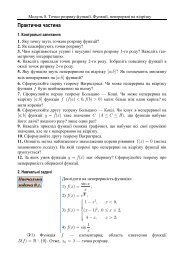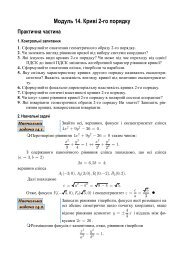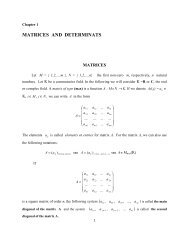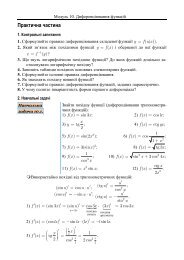4. Perception Understanding Key Concept - Uuooidata.org
4. Perception Understanding Key Concept - Uuooidata.org
4. Perception Understanding Key Concept - Uuooidata.org
You also want an ePaper? Increase the reach of your titles
YUMPU automatically turns print PDFs into web optimized ePapers that Google loves.
Attribution TheoryEarlier in the chapter we mentioned attribution theory in the context of perceptual interpretation.Attribution theory aids in this interpretation by focusing on how people attempt to (1) understandthe causes of a certain event, (2) assess responsibility for the outcomes of the event, and (3)evaluate the personal qualities of the people involved in the event. In applying attribution theory,we are especially concerned with whether one’s behavior has been internally or externally caused.Internal causes are believed to be under an individual’s control—-you believe Jake’s performanceis poor because he is lazy. External causes are seen as outside a person—-you believe Kellie’sperformance is poor because her machine is old.According to attribution theory, three factors influence this internal or external determination:distinctiveness, consensus, and consistency. Distinctiveness considers how consistent a person’sbehavior is across different situations. If Jake’s performance is low, regardless of the machine onwhich he is working, we tend to give the poor performance an internal attribution; if the poorperformance is unusual, we tend to assign an external cause to explain it.Consensus takes into account how likely all those facing a similar situation are to respond in thesame way. If all the people using machinery like Kellie’s have poor performance, we tend togive her performance an external attribution. If other employees do not perform poorly, weattribute internal causation to her performance.Consistency concerns whether an individual responds the same way across time. If Jake has abatch of low-performance figures, we tend to give the poor performance an internal attribution.In contrast, if Jake’s low performance is an isolated incident, we attribute it to an externalcause.ATTRIBUTION ERRORSIn addition to these three influences, two errors have an impact on internal versus externaldetermination—-the fundamental attribution error and the self-serving bias. Figure 1.16 providesdata from a group of health-care managers. When supervisors were asked to identify, or attribute,causes of poor performance among their subordinates, the supervisors more often chose theindividual’s internal deficiencies—lack of ability and effort—-rather than external deficiencies inthe situation—-lack of support. This demonstrates a fundamental attribution error—-the tendency tounderestimate the influence of situational factors and to overestimate the influence of personalfactors in evaluating someone else’s behavior. When asked to identify causes of their own poor


